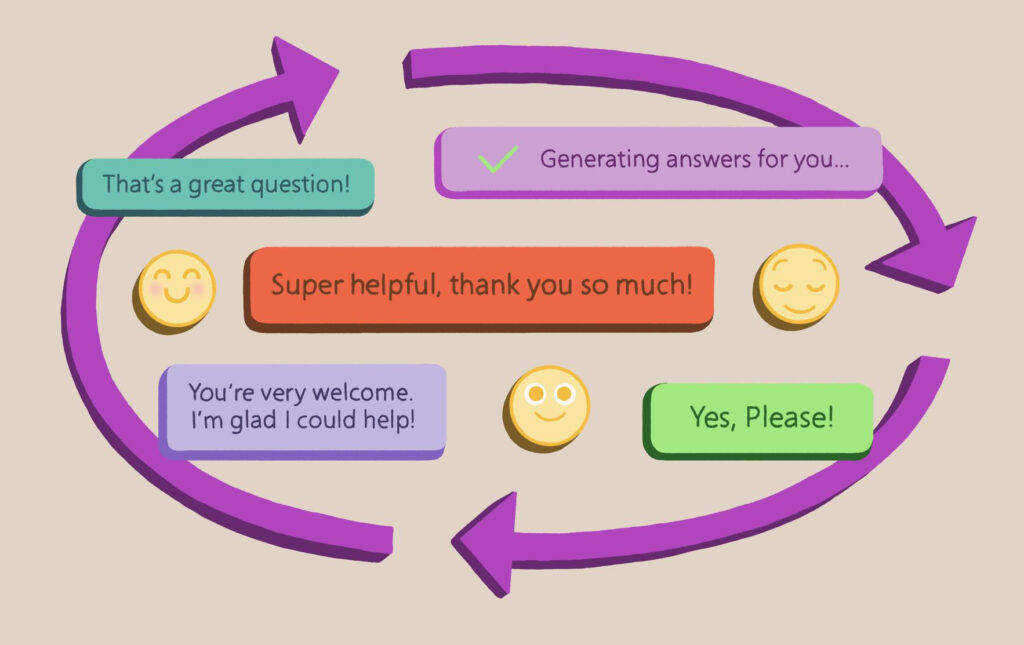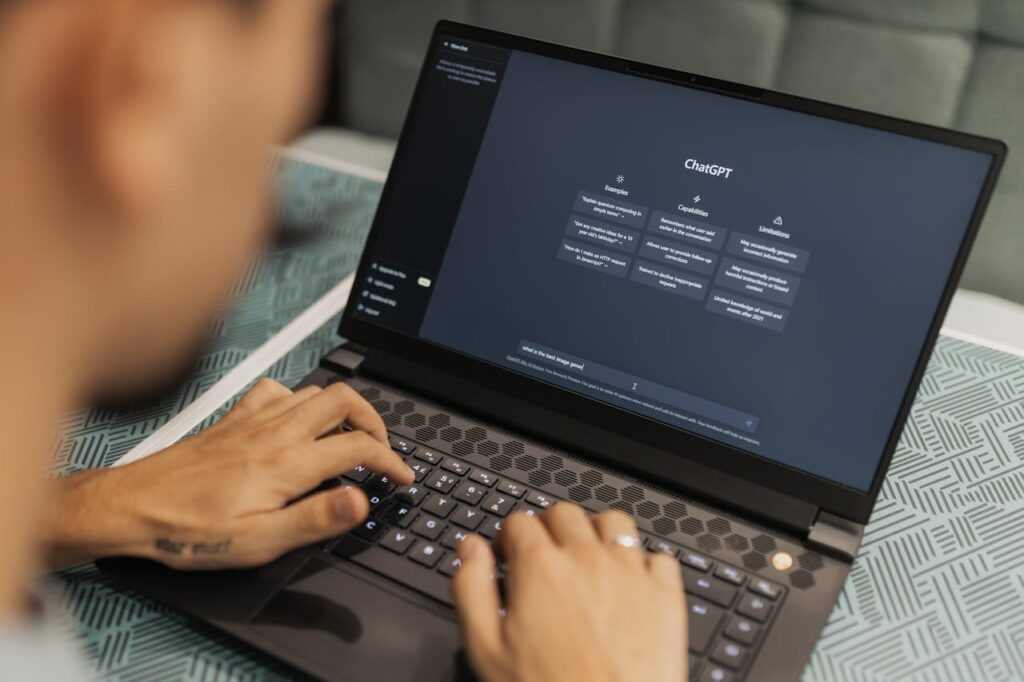Politeness isn’t just for dinner parties-it’s a secret weapon in the world of AI language processing and human-computer interaction. Saying thank you to AI chatbots, using polite language with virtual assistants, and crafting thoughtful prompts can actually influence the quality of AI responses, enhance user experience, and even shape the future of how we interact with technology. Curious about whether AI understands politeness, or the practical benefits of being courteous to your digital helpers? You’re in the right place.
Why are we polite to AI? The roots of digital courtesy
Let’s be honest: most of us have, at least once, found ourselves typing “please” or “thank you” to a chatbot or virtual assistant. If you’ve ever felt slightly silly doing so, you’re not alone-according to a recent Fortune study, nearly 80% of UK and US users use polite language with AI platforms, even saying thank you to AI chatbots. But why do we extend our social niceties to entities that, as far as we know, don’t care?
The answer lies deep in our psychology and social conditioning:
- Anthropomorphism: We naturally attribute human traits to non-human entities, especially those that communicate in human-like ways. This tendency, called anthropomorphism, makes us treat AI like a helpful shop assistant rather than a soulless algorithm.
- Social Scripts: Politeness is a social script drilled into us from childhood. It’s a reflex, not just a conscious choice. When faced with a conversational partner-human or not-our default is to be civil.
- Desire for Positive Interactions: Humans crave positive, cooperative exchanges. Politeness, even when directed at a machine, reinforces our own values and keeps us in the habit of civility.
- Self-Respect: As Sherry Turkle, MIT psychologist, puts it: “Politeness toward AI is a sign of respect-not to a machine but to oneself”.
In short, being polite to AI isn’t about the machine. It’s about us.
Does politeness actually impact AI responses?
Here’s the million-pound question: does saying “please” or “thank you” to an AI actually change the quality of its answers?
What the research says
Recent studies and user experiments suggest that politeness does make a difference-but not for the reasons you might expect.
- Polite prompts yield better responses: Multiple studies have found that when users phrase requests politely, large language models (LLMs) like ChatGPT and Gemini tend to generate more detailed, accurate, and nuanced responses. This effect is especially pronounced in tasks requiring explanation, summarisation, or creativity.
- Impolite prompts can degrade performance: Rude or brusque prompts have been shown to increase the likelihood of errors, bias, or even refusal to answer.
- Moderation is key: Excessive flattery or over-the-top politeness doesn’t further improve results and can even lead to less focused answers. The sweet spot is “moderate politeness,” mirroring typical professional or social exchanges.

Why does this happen?
AI doesn’t have feelings, but it does have patterns. Here’s what’s going on under the hood:
- Training Data Bias: LLMs are trained on vast datasets that include forums, emails, customer service chats, and more. In these datasets, polite requests are often associated with more comprehensive, high-quality answers.
- Context and Clarity: Polite phrasing often provides clearer intent and context. “Could you provide a summary of this article, please?” is a more explicit request than “Summarise this.” The AI picks up on these cues and tailors its response accordingly.
- Conversational Norms: Politeness aligns with the conversational norms embedded in the AI’s training, prompting it to mirror the tone and style of the input.
The nuances of language: How words shape AI’s output
Not all polite phrases are created equal. Let’s dissect the impact of different forms of courtesy in AI language processing:
| Direct Phrasing | Polite Phrasing | Observed AI Response |
|---|---|---|
| “List three book recommendations.” | “Could you please recommend three books?” | Polite phrasing often yields a more curated, explanatory list. |
| “Explain quantum mechanics.” | “Please explain quantum mechanics in simple terms.” | More detailed, accessible response. |
| “Fix this code.” | “Would you mind helping me fix this code, please?” | More thorough debugging and explanation. |
Key polite triggers include:
- “Please,” “thank you,” “could you,” “would you mind,” “I’d appreciate it if…”
- Formal closings: “Kind regards,” “Best wishes,” etc.
Takeaway: Even subtle shifts in tone can nudge AI toward more helpful, context-aware answers.
User experience and the human element: Why being polite to chatbots matters

Beyond technical output, politeness profoundly shapes the user experience in human-computer interaction:
- Positive Engagement: Users who are polite to AI report feeling more satisfied and less frustrated, even when the AI makes mistakes.
- Clarity and Thoughtfulness: Polite prompting encourages users to articulate their needs more clearly, often resulting in better answers.
- Emotional Regulation: Maintaining civility with AI can reinforce habits of patience and respect in human interactions-an underrated benefit in today’s digital-first world.
Future implications and AI evolution: The next chapter in polite AI language processing
As AI evolves, so too will its sensitivity to the subtleties of human language and politeness. Here’s where we’re headed:
- Cultural and Linguistic Adaptation: Newer models are being trained to recognise and respond to a wider range of politeness cues, including those specific to different cultures and dialects.
- Emotional Intelligence: Some researchers envision future AI that can detect user frustration or gratitude and adjust its tone or level of detail accordingly.
- Ethical and Social Norms: As AI becomes more integrated into workplaces and homes, the way we interact with it will shape organisational culture and even influence broader social norms.
- Politeness Modes: Companies are already experimenting with features like Alexa’s “politeness mode,” which encourages users to say “please” and “thank you,” and rewards courteous behaviour with positive feedback or gamified badges.
- Adaptive Personalisation: Future AI assistants may offer tailored responses based on your typical tone-mirroring your level of formality or friendliness, and even gently nudging you toward more effective communication styles.
- Sentiment-Responsive AI: Imagine AI that can escalate support or offer calming responses if it detects rising frustration, or that becomes more concise if you’re in a hurry-all based on the emotional undertones of your language.
Practical tips for polite AI interactions: Best practices for saying thank you to AI
Ready to level up your AI conversations? Here are some actionable best practices for being polite to chatbots and virtual assistants, including a thank you to AI when it provides helpful information.
- Start with a Greeting: “Hello,” “Hi there,” or “Good morning” sets a positive tone.
- Use “Please” and “Thank You”: These simple words can make a difference in both response quality and your own mindset.
- Be Clear and Specific: Politeness isn’t just about niceties-provide context and details for the best results.
- Frame Requests as Questions: “Could you explain…” or “Would you mind…” often yields more thoughtful answers.
- Acknowledge Good Responses: Feedback like “Thanks, that was helpful!” can subtly reinforce quality in ongoing conversations.
- Avoid Overdoing It: Excessive flattery or verbosity doesn’t help and may even dilute the AI’s focus.
Addressing skepticism and counterarguments: Is it necessary to be polite to AI assistants?
Let’s tackle the inevitable counterarguments:
- AI doesn’t have feelings: True, but politeness still shapes outcomes via training data and prompt structure.
- Efficiency over etiquette: Directness isn’t inherently bad, but a little courtesy rarely slows things down and often improves clarity.
- Is it performative? Perhaps, but maintaining civility-even with machines-reinforces positive habits and can make digital spaces less toxic.
In the end, whether you’re a “please-and-thank-you” devotee or a “just-the-facts” pragmatist, the evidence suggests that moderate politeness is a best practice for productive, satisfying AI interactions.
Key takeaways
- Polite language with AI assistants often results in more detailed, helpful responses.
- Anthropomorphism and social scripts drive our instinct to be courteous-even with machines.
- AI language processing is subtly influenced by the tone and clarity of your prompts.
- Being polite to chatbots improves user satisfaction and emotional experience.
- Future AI models may become even more sensitive to nuances in human politeness.
- Saying “please” and “thank you” costs nothing, but can enrich your digital interactions.
Conclusion: Manners matter, even in the digital age
So, does saying thank you to AI matter? The answer is a resounding yes-for both practical and psychological reasons. Politeness can measurably improve the quality of AI responses, enhance user satisfaction, and reinforce the kind of communication habits that make us better humans, not just better users.
Next time you’re about to bark an order at your digital assistant, consider sprinkling in a little courtesy. You might just find that, in the world of human-computer interaction, good manners– like saying thank you to AI –are always in style.



